A small block of mass m slides along a smooth frictionless track as shown.
(a) If it starts from rest at P, what is the resultant force acting on it at Q?
(b) At what height above the bottom should the block be released so that the force it exerts against the track at the top of the loop equals its weight?
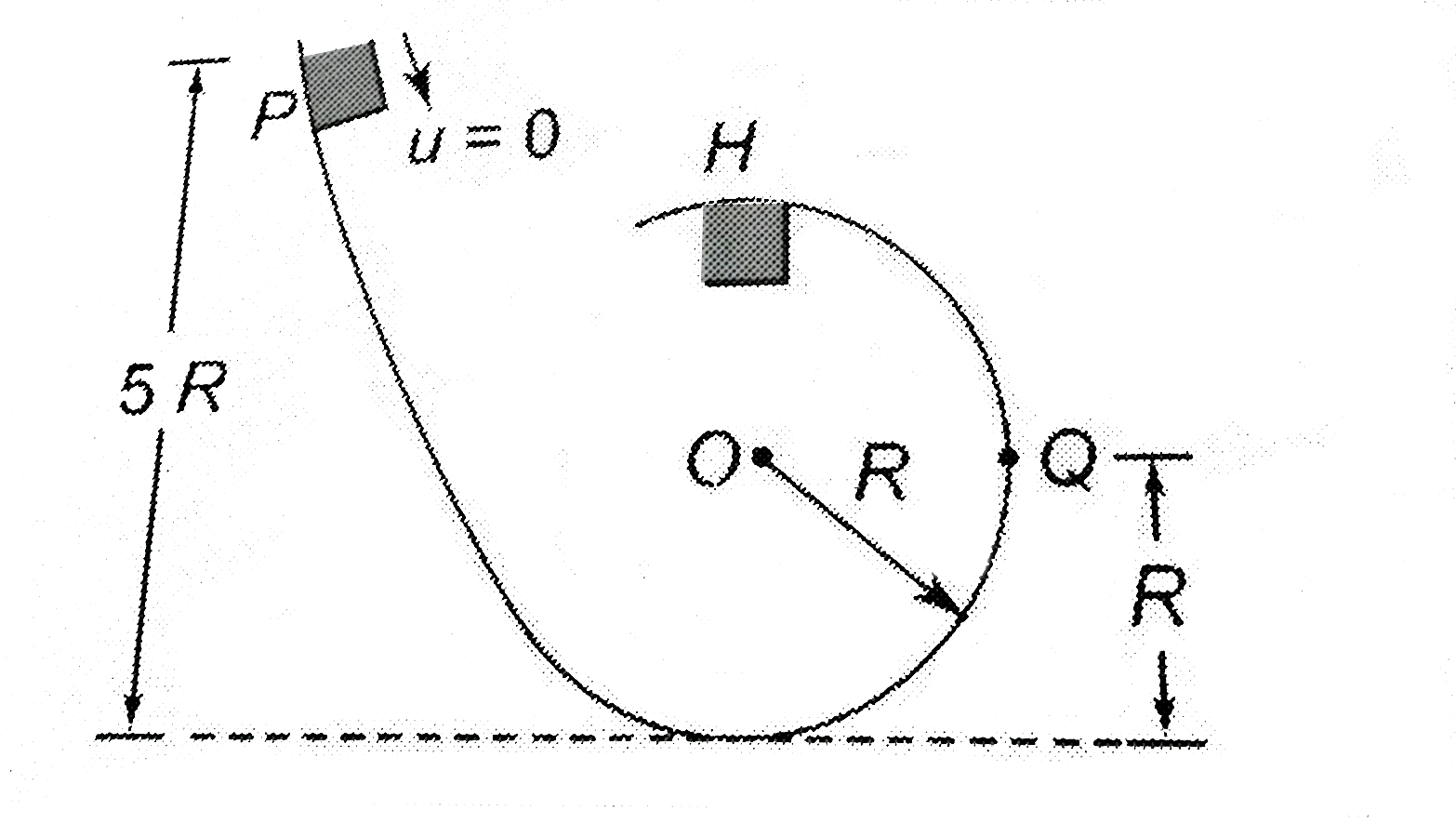
(a) when the block reaches at Q, its speed is v.
v2=u2+2gh=0+2g(5R−R)=8gR
N=mv2R=8mg
weight of the block W=mg
Resultant force on the block when it is at Q is
√N2+W2=√(8mg)2+(mg)2
=√65mg
(b) when the block is at H,N'+mg=mv20R,
Given N'=mg
2mg=mv_(0)2R⇒v20=2gR
v20u2+2g(h−2R)
2gR=0+2g(h−2R)
h=3R

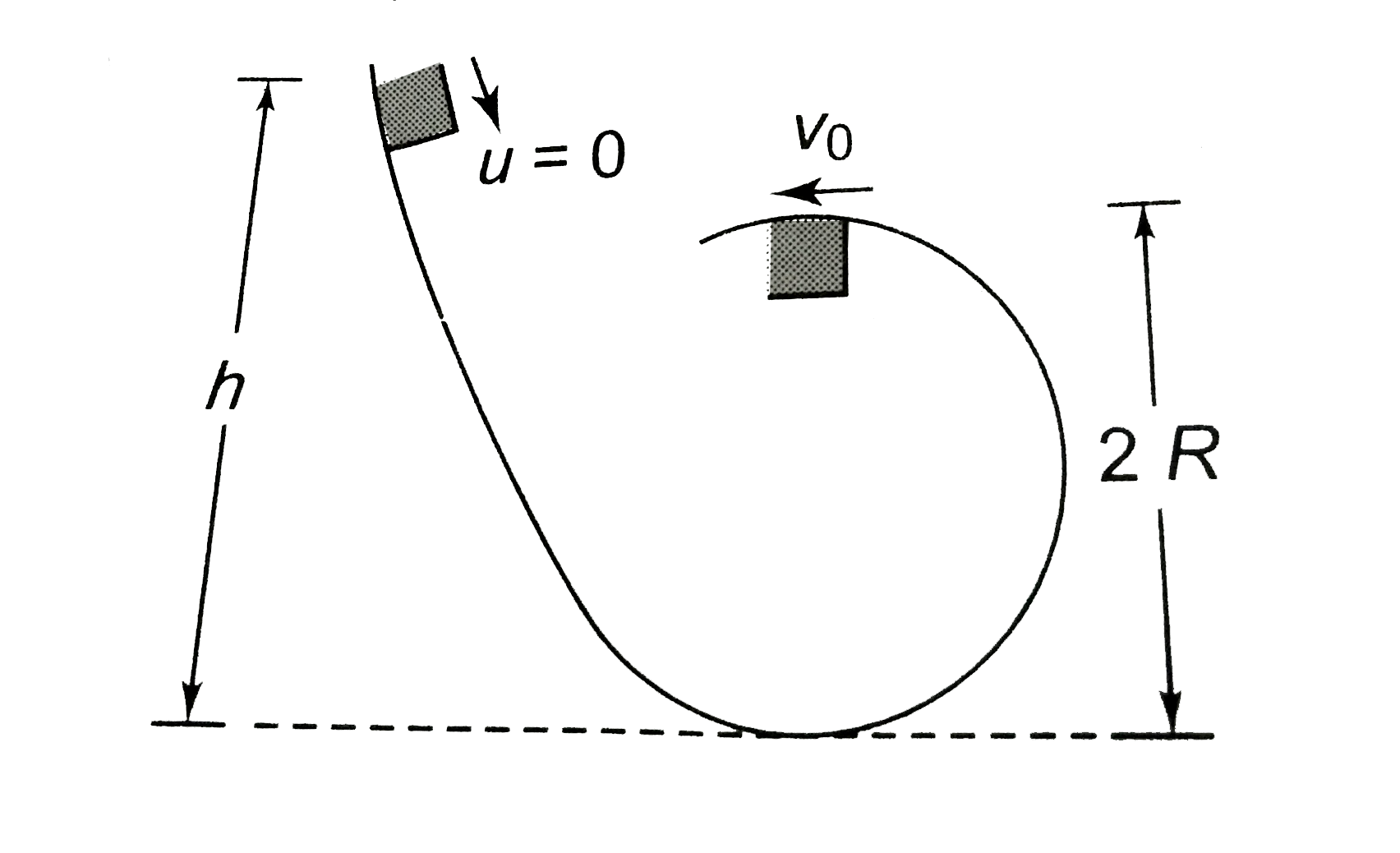
Topper's Solved these Questions
Similar Questions
A small block of mass m slides along a smooth track, as shown in fig. (i) If it starts from rest at P, what is the resulting force acting on it at Q ? (ii) at what height above the bottom of the loop should the block be released so that the force it exerts against the track at the top of the loop equals its weight?
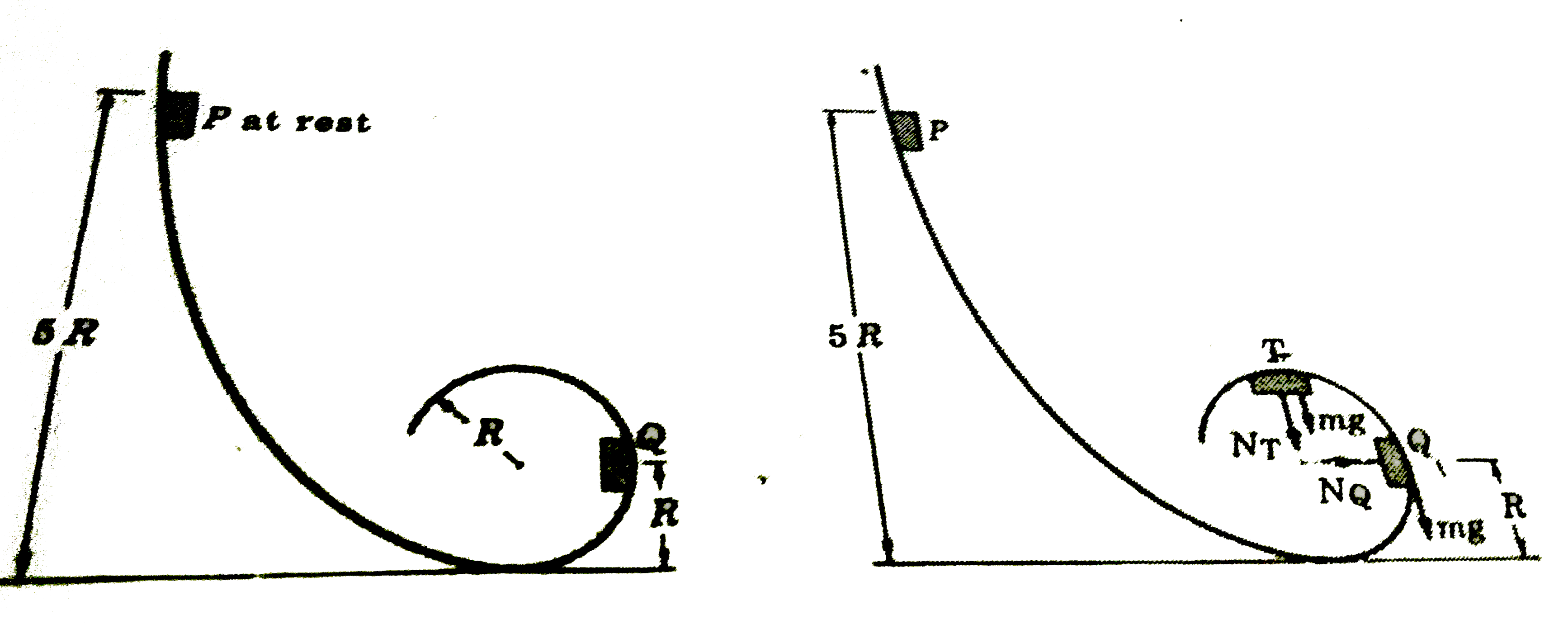
View SolutionA small block of mass m slides along a smooth frictional track as shown in the figure. If it starts from rest at P, what is the resultant force acting on it at Q?
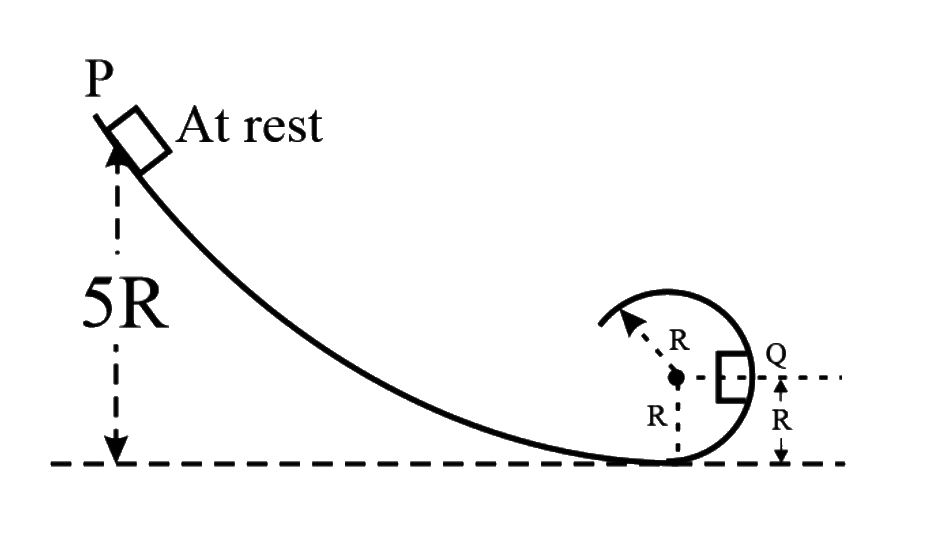
View Solution
Knowledge Check
A block of mass 2 m is pulled along a horizontal frictionless surface by a rope of mass m as shown in the figure given. What force is exerted by the rope on the block ?
 AF3BF2C2F3DF
AF3BF2C2F3DF
A block of mass m slides along a frictionless surfce as shown in the figure. If it is releases from rest t A what is its speed at B?
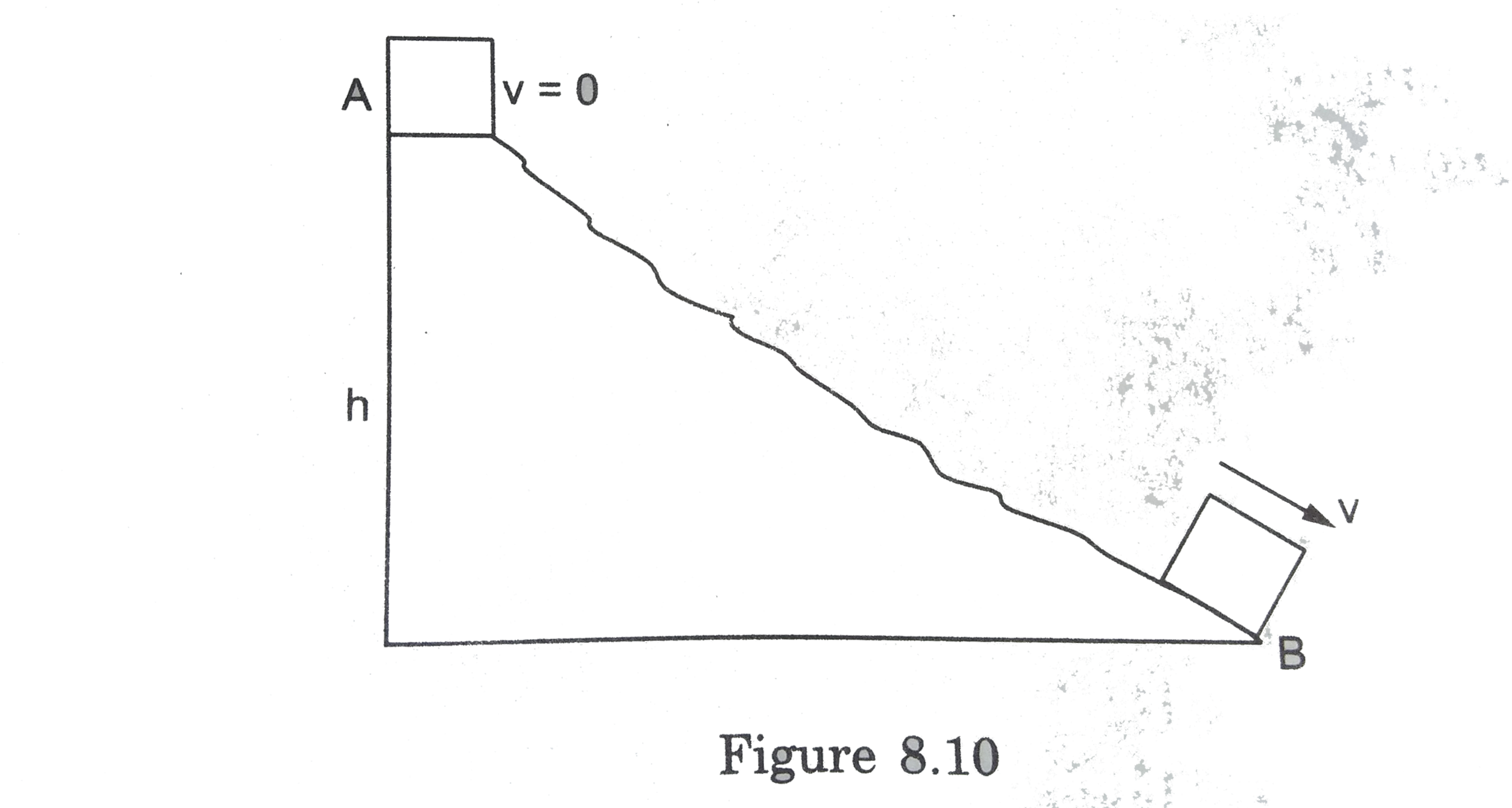
View SolutionA block shown in figure -3.12 slides on a semicircular frictionless track. If it starts from rest at position A, what is its speed at the point marked B ? Take g=10m/s2
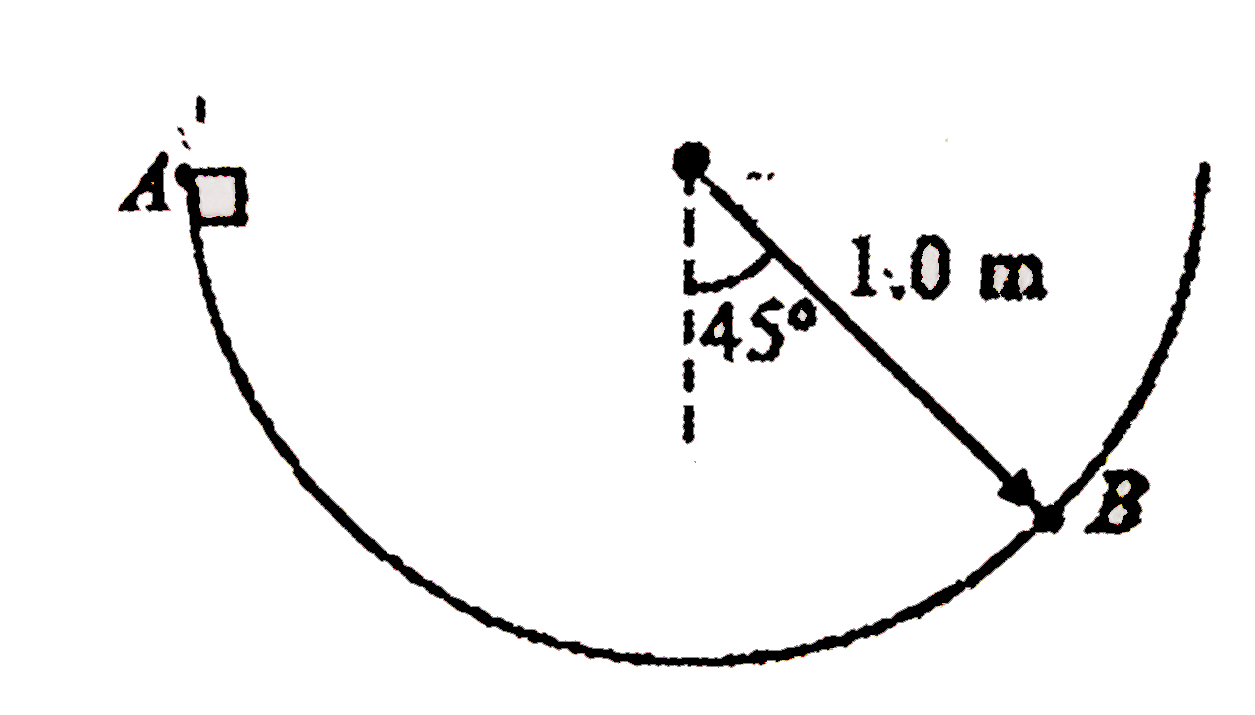
View SolutionWith what acceleratin a should the box of figure desecend so that the block of mass M exerts a force Mg/4 on the floor of the box?

View SolutionA block of mass m is released along a smooth track shown in figure from its top point. Find the word done by gravity during its downward motion to the bottom of track.
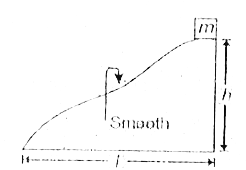
View SolutionIn Problem 51, what are the magnitudes of (a) the horizontal component and (b) the vertical component of the net force acting on the block at point Q ? (c) At what height h should the block be released from rest so that it is on the verge of losing contact with rest so that it is on the verge of losing contact with the track at the top of the loop ? (On the verge of losing contact means that the normal force on the block from the track has just then become zero. ) (d) Graph the magnitude of the normal force on the block at the top of the loop versus initial height h, the range h=0 to h=6R.
View SolutionA block of mass M is pulled along a horizontal frictionless surface by a rope of mass m as shown in A horizontal force F is applied to one end of the rope. Find
(a) the acceleration of the rope and block
(b) the force that the rope exerts on the block
(c) the tension in the rope at its mid point
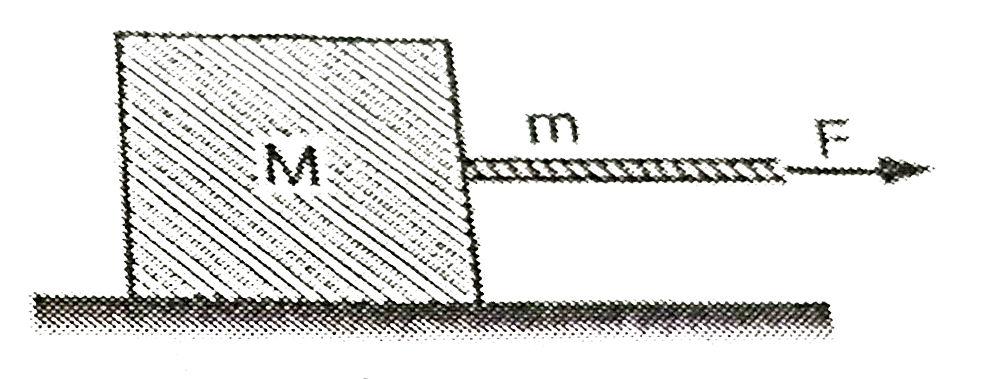
View SolutionA small block of mass m slides along a frictionless loop-the-loop (loop inside loop) track. What should be the ratio of the radius of the outer loop to the radius of the inner loop so that the the block may not lose contact at the highest point of the inner loop ?
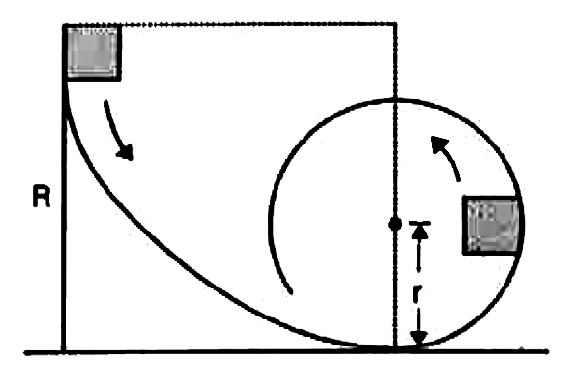
View Solution
